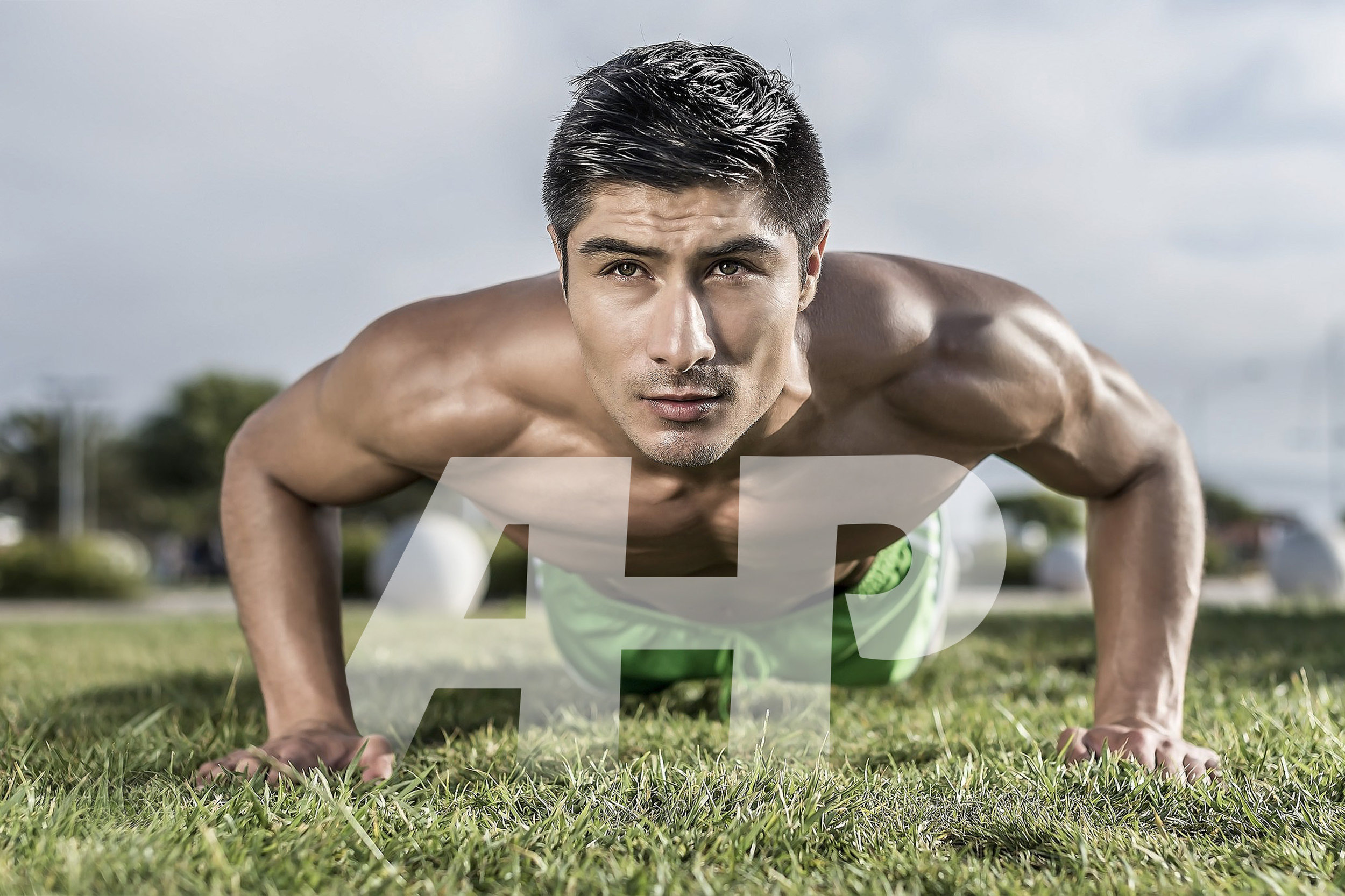The Best Lat Pulldowns You’ve Never Done: Squatting Lat Pulldowns
Dr. Joel Seedman, Ph.D.
Although pullups and chin-ups, and variations thereof, are my go-to vertical pulling exercises for my clients and myself, I periodically like to employ lat pulldowns. That’s because the lifter can deload the movement easily and focus purely on upper body mechanics without worrying about the lower extremities. In fact, when it comes to cleaning up vertical pulling mechanics, lat pulldowns are my go-to exercise, as they’re much easier to correct and improve than pullups. However, once the athlete has mastered their mechanics on pulldowns, it has tremendous carryover into their pullups and chin-ups. Besides cleaning up vertical pulling mechanics, lat pulldowns can also provide a slightly unique and different stimulus than pullups thereby promoting functional strength and hypertrophy when periodically employed in one’s training routine.
With that said, most lifters, including many coaches and trainers, butcher their lat pulldowns by using aberrant mechanics and dysfunctional positions. As a result, not only do they disrupt their glenohumeral joint mechanics, wreaking havoc on their shoulder joints and posture, these faulty mechanics tend to alter their pullup technique as well. While a basic lat pulldown can be effective to re-set the lifter's form and hone in on their problem areas, one unique lat pulldown variation I’ve been using over the past 2 years that has a tremendous impact when it comes to enhancing vertical pulling mechanics is the squatting lat pulldown.
In fact, this is something I use roughly once every 10-14 days with clients as I’ve found that the squatting lat pulldown has multiple benefits not only in terms of cleaning up vertical pulling form and upper body mechanics, but also for stimulating significant growth in the upper back and lats. Here are several of my athletes and clients including NFL quarterback Taylor Heinecke, Leslie Petch, Ben Lai, Ike Onike, and Erin English showing some unique variations.
To perform the squatting lat pulldown, position yourself under a cable pulley station (typically one that has a slight overhang and is used for tricep pressdowns) or pulldown station. From there simply grip the lat pulldown bar then pull yourself into the squat position. Perform your lat pulldowns while holding this double 90-degree squat hold throughout. Sounds simple in theory but in reality these are undoubtedly the most intense lat pulldowns you’ll ever perform.
With that said, here are 10 reasons why you should include squatting lat pulldowns in your training routine.
1. Eliminates excessive range of motion in the bottom-contracted position of the lat pulldown. Most lifters pull significantly past 90 degrees on lat pulldowns (mid face height), which minimizes lat activation and increases tension to the shoulder joint. Fortunately, the squatting lat pulldown remedies this issue as pulling too low will actually cause the body and hips to sink towards the floor rendering the lifter unable to hold the optimal 90-90 squat. This also reinforces the same proper ROM for pullups.
2. Eliminate excessive ROM at the top stretched position of the lat pulldown. Similar to the contracted position, most lifters allow the load and gravity to pull their shoulders excessively high at the top position (over-elevation) thereby placing strain on the tendons, joints, and connective tissue of the shoulders and elbows. Proper positioning in the top of a lat pulldown involves complete extension with the arms while also keeping the shoulders and scapula semi-packed. Fortunately, the squatting lat pulldown also provides the perfect cue here. If the lifter allows the shoulders to be pulled too high, this causes the whole body to be pulled out of the squat position.
3. Eliminates momentum and jerky motions. Using excessive momentum will make it literally impossible to hold your squat position. As you notice in the video with my clients and I performing the different variations, the rep cadence is quite slow and controlled throughout. This is out of pure necessity as anything less will make it impossible to hold the squat and control the load. In fact, most of the variations require eccentric isometrics to be employed in order to maintain control of the exercise.
Note: The combination of points #1, 2, and 3 create unbelievably high levels of intramuscular tension to the lats and upper back making the squatting lat pulldown an effective choice for building functional strength and mass.
4. Reinforces a tight core while minimizing lumbar extension. A very common problem on lat pulldowns and pullups is using excessive low back arch. This is literally impossible to do while performing squatting lat pulldowns as the anterior core must be aggressively engaged throughout.
5. Reinforces t-spine extension and eliminates rounded shoulder syndrome. Any shoulder rounding, internal rotation, or poor postural mechanics will make it nearly impossible to perform these with any semblance of motor control.
6. Grooves a proper 90-90 squat position. A proper squat for any human involves approximately 90 degree joint angles at both the hip and knee joints. The squatting lat pulldown is not only conducive for learning this, the movement essentially has to be performed in that position in order to be able to handle any significant loading. Read more about proper squat form and depth here.
7. Teaches the athlete how to pull themselves into the bottom of a squat. Learning to pull yourself into the 90 degree position of a squat via co-contraction of reciprocal muscle groups is a critical component of a squat or any movement for that matter. In order to move into the squat and hold it throughout, the lifter will be required to aggressively fire their hip flexors and hamstrings as a means of pulling themselves into the squat. This does wonders for cleaning up squatting technique and lower body mechanics.
8. Requires the athlete to produce full-body tension. The squatting lat pulldown literally forces the lifter to remain incredibly tight from head to toe and eliminate energy leaks. This has a tremendous impact not only on vertical pulling motions but on every other compound movement as it reinforces full body tension and enhanced spinal rigidity.
9. Provides and numerous options and variations. The squatting lat pulldown is one of the most versatile and adaptable vertical pulling movements there is. The lifter can essentially use the basic squat hold or progress to a more advanced single leg squat hold. Each variation has its own unique attributes and benefits.
10. Helps improve lower body alignment. This is particularly true of the single leg and/or single arm variations as the rotational forces require the lifer to maintain perfect body alignment from head to toe as anything less will cause the torso to rotate and twist. This has a tremendous impact on the entire kinetic chain including upper body posture as well as foot and ankle alignment.
Note About Loading and Counterweights
Most lifters should be able to use 75-80% of their bodyweight while still holding a squat position. Keep in mind, the heavier the load, the more difficult it is to hold the squat. That’s because the lifter will have to fire the daylights out of their core, legs (hamstrings and hip flexors), and lats to keep them pulled down. If the lifter intends to use heavier loads he or she will need to use a counterweight in the form of chains or a weighted vest to keep them anchored down as I show in the first variation.
It's also important to note that even my most advanced athletes struggle to use 75% of their bodyweight on the squatting lat pulldown as the tension to the lats, upper back, and core is through the roof. In fact, I would estimate that a squatting lat pulldown with 75% of your bodyweight is equivalent (in terms of load and intensity) to a weighted pullup using a load equivalent to an additional 25-30% of your bodyweight attached to you. Don’t be surprised if you build a love-hate relationship with these as the results will cause you to love them but the intensity causes most lifters to dread them.
Regressions and Other Options
Some lifters may want to start with kneeling or half kneeling lat pulldowns before attempting these.
The stimulus and effect with the kneeling variations tends to be similar albeit less intense than squatting lat pulldowns. Additionally I highly recommend becoming efficient at the half kneeling variations of lat pulldowns before trying the single leg squatting variations as they're incredibly difficult. Read more about the Rotational Band Strap Method Here.
Anti-Arching Lat Pulldowns
Here I have 2 of my awesome bodybuilding clients Leslie Petch and Ben Lai performing 2 variations of lat pulldowns that are incredibly effective for reducing the all-too-common- excessive back arch & lumbar extension we often witness with lat pulldowns & pullups.
While it’s important to maintain a slight natural arch in order to ensure the shoulders are pulled back and the client is squeezing their upper back, most of the extension should be occurring through the t-spine, not the lumbar spine. By sitting with the hips in a flexed position this helps minimize the degree of lumbar extension as it pulls the pelvis in a more neutral position & also helps engage the abs & anterior core.
These absolutely annihilate the lats & upper back especially since the lifter is unable to rely on excessive momentum or low back extension. They also have great transfer to pullups. There is a subtle difference between the 2 variations. Variation #1 involves a knee tuck position. While this is definitely going to eliminate excessive lumbar extension, some folks might find it difficult to keep their shoulders down & retracted. The 2nd variation tends to be a bit easier to maintain retracted & depressed shoulders although it does allow a bit more extension in the low back to occur.
Most folks will find both options beneficial however some will likely favor one over the other. Regardless of which variation you choose I recommend performing them in an eccentric isometric fashion as both Leslie and Ben show here as it not only maximizes the functional strength & hypertrophy but it also helps maximize technique, biomechanics and muscle function via enhanced proprioceptive feedback. Read more about eccentric isometric in my book MOVEMENT REDEFINED. Oh and yes, the ROM shown here (approximately 90 deg.) is optimal which is also discussed in my book.
To learn more about programming these lat pulldown variations into your training routine, check out my Complete Templates Program or check out my Daily Workouts TRAINING REDEFINED.



























































